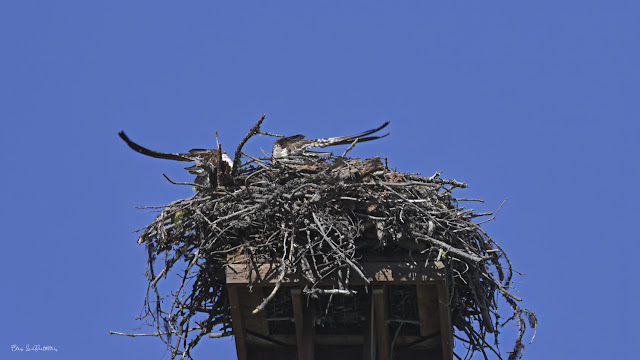Wings of Determination: A Young Osprey’s First Flights
Wings of Determination: A Young Osprey’s First Flights
Perched high atop a manufactured nesting platform, crafted with care to keep birds safe from dangerous electrical wires, rested a nest, stitched together with twigs and time. Nestled within, a young female osprey, gaze lifted skyward, ready to meet the wind with wings not yet worn.
ChrisLeBoutillier.jpg)
I had the privilege of watching her embark on one of life’s great firsts: learning to fly. The events that happened were not merely a sequence of wing flutters, head-first impacts, and unsuccessful landing attempts; rather, they formed a narrative of unwavering resolve and impressive persistence.
From the start, she showed remarkable determination.
With cautious grace, she would take flight, circling the nest in careful loops, gauging her return like a pilot surveying a runway. Sometimes, she would retreat to a nearby tree, feathers ruffled but spirit intact, gathering the courage to try again.
What struck me was the intensity on her face—a look of pure focus, fearless and unshaken.
Her attempts were often clumsy; more than once she landed beak-first in the nest, a flurry of feathers and awkward landings. But not once did she give up. Instead, she would hop up, shake herself off, and launch again.
For hours she practiced. Each landing sharpened her instincts. As the day progressed, her skill began to shine.
She would approach smoothly, landing cleanly in the nest, her head popping up as if to say, “Did you see that?” She looked so proud—as she should be.
Watching her reminded me how growth often comes in crashes before grace.
How Long Until Ospreys Fly Free to Fish?
Typically, young ospreys start flying around 7 to 8 weeks old. But flight is just the beginning, the art of fishing comes next. They will usually remain near the nest for another few weeks, during which time the parents continue to provide food while the juveniles refine their flying and learn the nuances of catching fish. When they reach 10 to 12 weeks of age, they are prepared to embark on their own adventures and take to the skies.
A Reminder from the Nest: Keep Fishing Line Out of Nature
As I watched the osprey take flight, something troubling caught my eye in one of the images: a large clump of fishing line, twisted into the nest, tangled on a branch. One of the parents must have unknowingly gathered it as nesting material. It was a sobering moment.
Fishing lines, though seemingly harmless, can be deadly. If a young osprey becomes entangled, it can result in severe consequences such as broken wings, inhibited growth, or even fatality. It is heartbreaking to think that a simple act of carelessness could undo all the hard-earned progress of such a determined bird.
So please—if you are fishing and need to replace your line, always place the old line in a trash can, or take it home to dispose of properly. It is a small gesture that protects life.
Nature is resilient, but it is also vulnerable to the decisions we make. That young osprey’s bravery deserves a world free of preventable dangers.
ChrisLeBoutillier.jpg)
ChrisLeBoutillier.jpg)
ChrisLeBoutillier.jpg)
ChrisLeBoutillier.jpg)
ChrisLeBoutillier.jpg)
ChrisLeBoutillier.jpg)
ChrisLeBoutillier.jpg)
ChrisLeBoutillier.jpg)
ChrisLeBoutillier.jpg)
ChrisLeBoutillier.jpg)
ChrisLeButillier.jpg)
ChrisLeBoutillier.jpg)
ChrisLeBoutillier.jpg)
